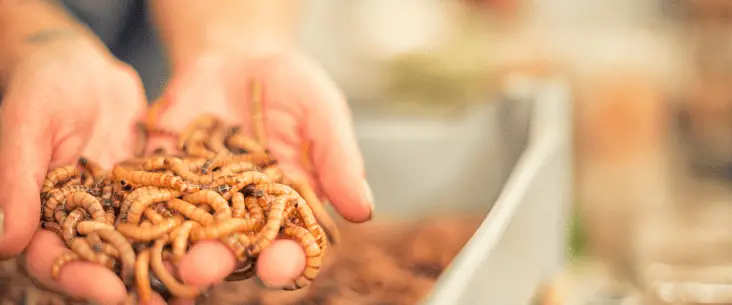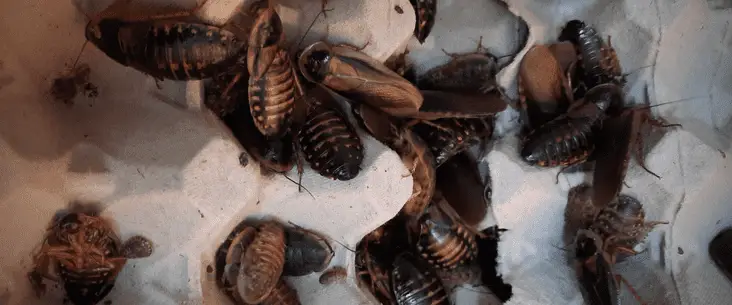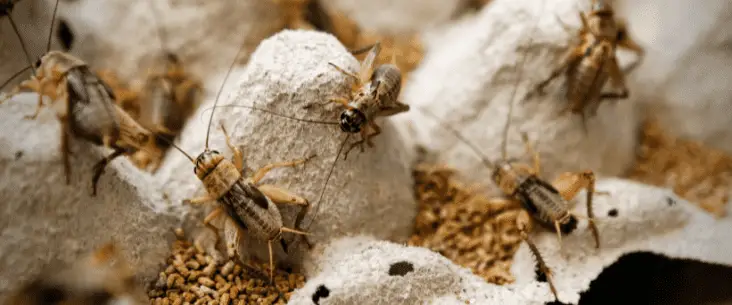You probably have considered breeding your own feeder insects. Wishing that you never have to buy your staple feeders for your animal again. But there is so much choice which feeder insect you should breed, and wondering how difficult it actually is. So let’s first discuss what feeder insect is the easiest to breed and what you’ll need to consider before starting to breed your own staple food.
When considering maturation and gestation time combined with the difficulty to breed and care for, dubia roaches are the easiest to breed as a feeder insect. However, which feeder insect you should breed depends on your situation, and you should consider the profitability threshold, investment costs, and suitability as a staple food.
To determine which feeder insect is the easiest to breed is influenced by five main factors: maturation time, gestation time, eggs laid by a female, the difficulty of care and breeding, and the possibility that it can infest and become a pest. Different feeder insects can make a different smell, and this is a personal preference (it is the same with the smell of different pets). There is much more to consider before starting to breed you own feeder insects, but we will discuss that in later sections.
| Species | Maturation time | Gestation/ hatch time | Eggs by every female | Difficulty of care/breed | Easy infest? |
|---|---|---|---|---|---|
| Dubia roaches | 150 days | 65 days | 175 | Easy | No |
| Crickets | 30 days | 7-13 days | 100 | Easy | Yes |
| Mealworms | 40 days | 4-19 days | 500 | Easy | No |
| Superworms | 60 days | 7-25 days | 500 | Easy | No |
| Locusts | 55 days | 11-14 days | 350 | Medium | No |
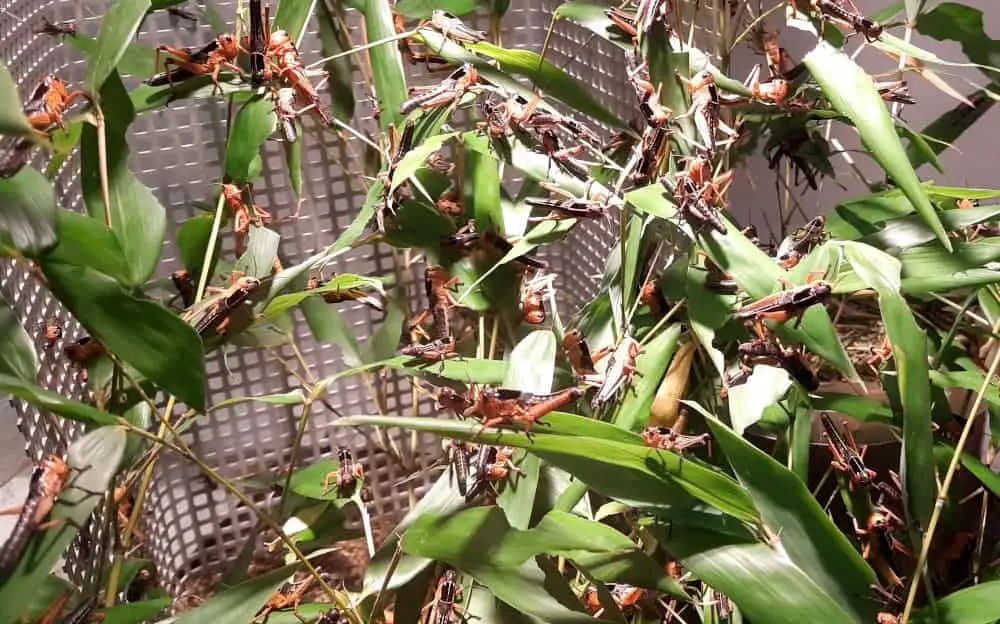
What makes a feeder insect suitable to breed by yourself?
As we already shortly discussed, multiple factors influence the suitability of breeding feeder insects yourself. These factors determine not only the ease in which you can breed them but also the amount of feeder insect (breeding outcome) of your breeding colony. Let’s have a closer look at these factors, and they influence the ease of breeding feeder insects yourself.
Gestation and maturation time
The first factors gestation and maturation time determines the breeding outcome. When keeping a breeding colony of a certain feeder insect species, it is important you breed enough insects to feed your pet animals.
The time of gestation (or time before the eggs hatch) and the time of maturation before the next generation provide eggs, or with other words, the speed of its life cycle, dictates if it is worth breeding them yourself. When the life cycle is slow and long, and the reproduction rate is low, you’ll need a lot of insects to make it feasible to feed from your own feeder insect colony. And when you need a lot of animals to maintain the breeding outcome affect the costs (i.e. profitability threshold).
The difficulty of care and breeding
Another point to consider is the actual difficulty to care and breed with the feeder insects in the first place. You don’t want to have to take too much effort to create a proper breeding outcome. So the animals need to thrive without much attention.
Of course, the animals often used as feeder insect are selected because they are easy breeders and also easy to keep. But there is a difference between keeping them at large scale in professional settings or at home in a room or garage. Also, be aware that some insects only breed well when kept in larger colonies and therefore don’t make good feeder insects at a small scale.
Can it become an infestation
When breeding feeder insects at home, you want to be sure that it does not become an infestation. Where some insects don’t survive or at least don’t breed within our room environment, others do. For example, crickets are notorious for becoming a pest, and will survive and breed in our home climate.
On the one hand, you need to be aware that some insects survive outside your breeding container; on the other hand, some insects are better in escaping than others. Dubia roaches, for example, don’t climb smooth surfaces and don’t jump or fly, and they won’t escape that easily. Locusts are great jumpers and can fly great distances. Crickets can jump very well and move rather quickly, which make them better in escaping when caring for them.
Suitability of feeder insect as a staple food for your pet
Having your own breeding colony provides you with an almost unlimited supply of feeder insects, that continuously replenish itself if you are doing it well. But not all feeder insects make good staple food for your animals, and it differs for each animal which food is best to be fed in large quantities.
Dubia roaches, crickets and locust make great staple food for many reptiles and adult tarantulas. But if you feed those animals only (or mostly) mealworms and superworms are not healthy. Mealworms and superworms contain much more fat and are not good to provide regularly.
Ghost mantises and violin wandering mantises don’t do much with crickets or dubia roaches. They eat mostly curly flies and nymphs do very well on fruit flies. The bottom line is that you should think about what the animals need where you breed your feeder insects for.
Time that it can be fed
You also need to consider the time you have to feed the insects before they die. When you breed dubia roaches, you have several months before the adult dies. But compared to mealworms, you only have a couple of weeks before they start pupating into beetles. When the feeder insect has a shorter window to feed them, you have to plan more accurately how much you breed and how large your breeding colony have to be. That makes some feeder insect, like dubia roaches, more suitable to breed yourself compared to others.
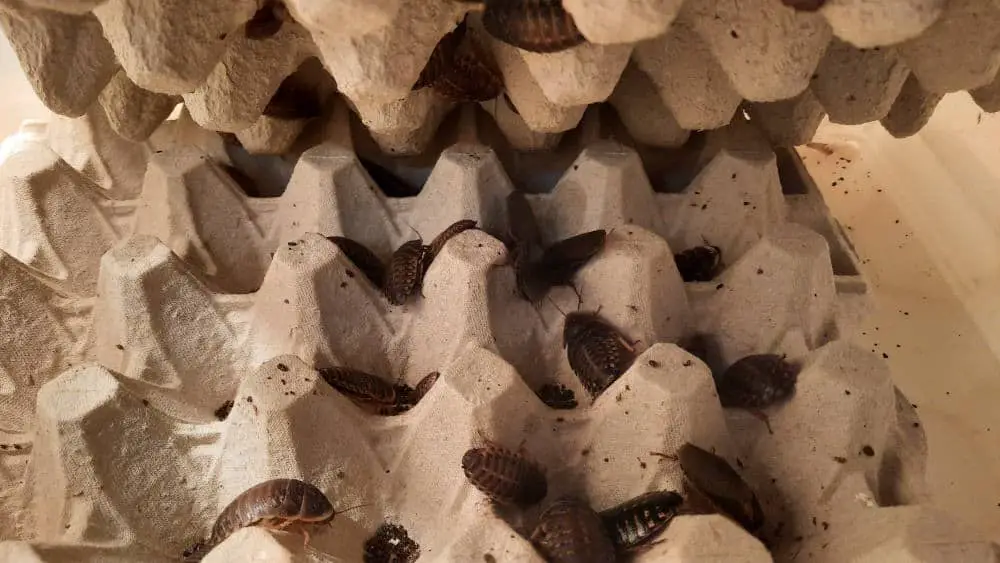
What should you consider before you start breeding feeder insects?
To make a conscious choice if you should start breeding your own feeder insects, there are some other things you need to consider. Where the previous section was more focused on the ease of care and breeding feeder insects, we also have to weigh the costs and investment. Although there are some reasons to do your own breeding instead of buying even if breeding yourself is more expensive, most of the time you want to start breeding yourself because it is cheaper than buying.
Buying vs. breeding
Though breeding feeder insects can be fascinating and have many benefits, you always should be aware that some feeder insects are more expensive to breed yourself than buying them from a store.
Because the pricing of feeder insects greatly vary between different countries, there is not one list to make which insects are cheaper to breed yourself and which you can better buy. Professional feeder insect breeders breeding on a large scale, which makes the costs per insect lower compared when breeding at home yourself. Typically dubia roaches and locusts are worthwhile breeding yourself.
But, the higher delivery costs of live animals (you need fast deliveries because otherwise, they don’t survive the transport) makes having your own breeding colony cheaper than regularly buying them.
Profitability threshold
When you have one insect-eating animal it is probably not worth breeding your own feeder insects (except when having opossum or other large insectivore). Consider that breeding your own insect is only cost effective when from a certain scale. We call that the profitability threshold: the “break-even point” when the amount makes the cost per feeder insect lower than buying them.
The main benefit of breeding insects yourself is that you don’t have to charge yourself for the labour. Breeding insect can be quite labour intensive (but believe me, it is not that intensive) and labour is money. However, at home you decide yourself how many time you want to spend on your animals and feeder insects.
Investment for the long run
Evenly important and to be aware of when starting a breeding colony, is that it can take some time before you can profit from your own breeding colony. Why is that? Well, first, you have to make an investment and start-up your breeding colony. But before you can feed from your own colony, you have to wait for the next generation. And even then, you also need a part of the next generation the make your own breeding colony sustainable. If you feed to many of the breeding colony than the breeding outcome will be lower and lower until you have no insects left. It has to stabilize first before you can optimal feed from your own breeding colony. So be aware that you have to wait for some time before you can stop buying feeder insects.
More feeder insects than you could feed
It can also happen that you end up with more feeder insects than you could feed. You need to have a plan for that as well. You can’t just release the feeder insects that you bred too much into the wild.
You can separate them and house them in a non-breeding group. But it would be better if you know one or two people that you can give the feeder insects to feed their animals. With some insects, you can make a bird feeder for in your garden so the wild birds can enjoy a little snack now and then.
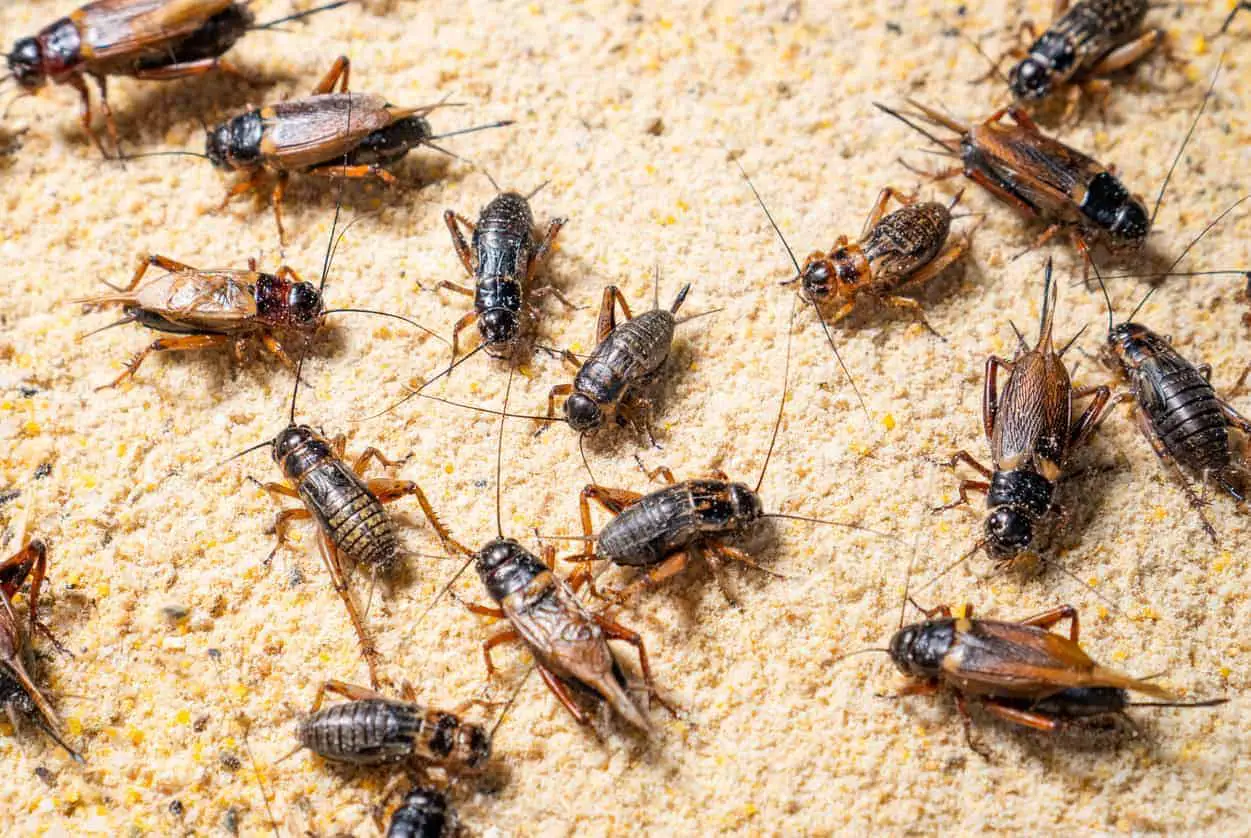
Reasons why you should breed yourself even when more expensive
Even when breeding feeder insects can be more expensive than buying them, there still some reasons why you should breed them yourself.
- You have all sizes available of that particular feeder insect. When buying them, it is often one size you receive. This is especially true for crickets and locusts.
- You know that they are nutritionally fed from the start (gut-loading) and that they make good food for your pet animal.
- When you have a stable breeding colony, you always have feeder insects available, and you don’t have to worry about when you order them and how long the delivery takes.
- When you expand your breeding colony, you can sell your feeder insects locally to gain some profit from it.
Want to know more?
If you wish to start breeding your own feeder insects, I can recommend you to read the article about the ‘general care of feeder insects‘.
Also, read the specific breeding guides on different feeding insects in this section to find out everything you need to know about keeping your own breeding colony.
Share this page!

